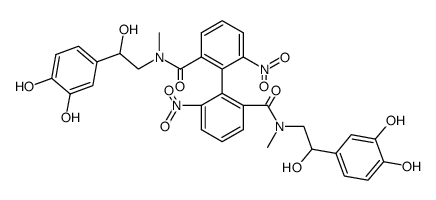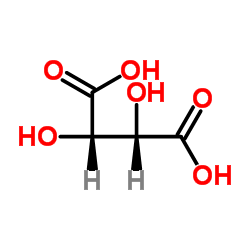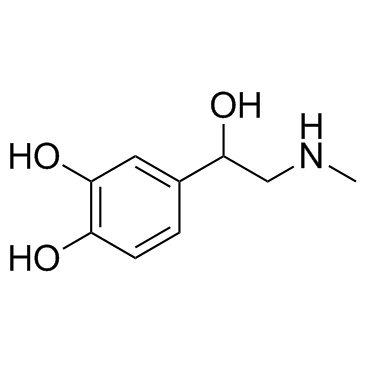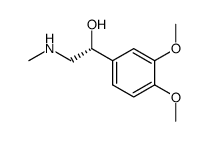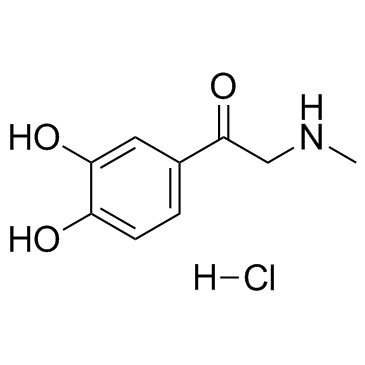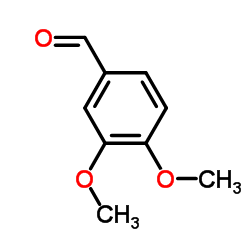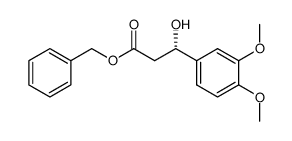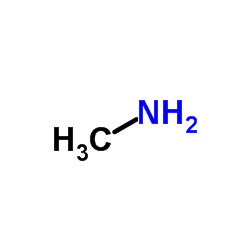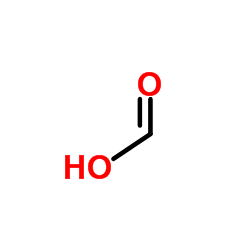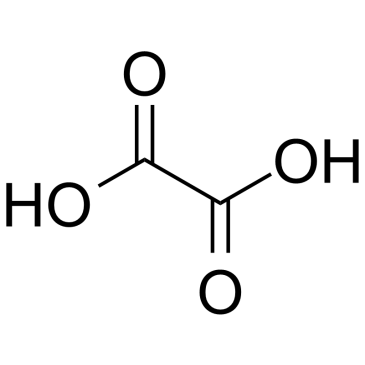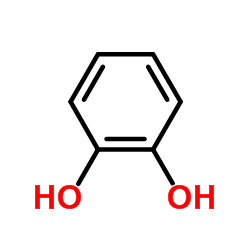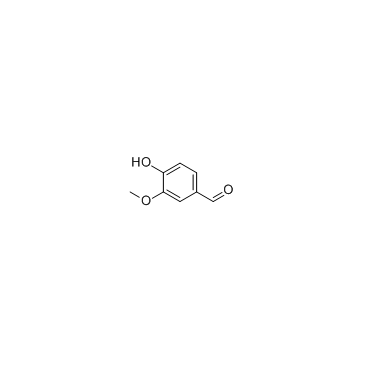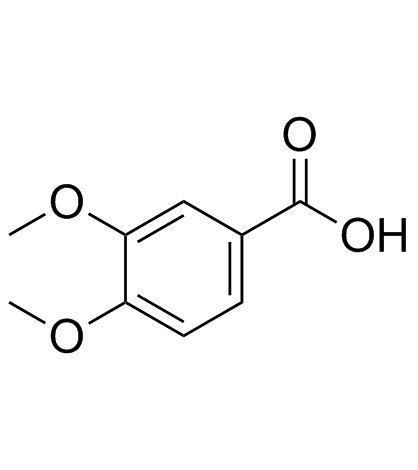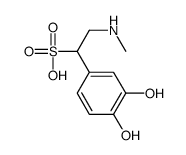51-43-4
| 中文名 | L(-)-肾上腺素 |
|---|---|
| 英文名 | (R)-adrenaline |
| 中文别名 |
L-3,4-二羟基-alpha-((甲氨基)甲基)苄醇
L-肾上腺素盐酸盐单水合物 L-肾上腺素 副肾碱 (-)-肾上腺素 肾上腺素 (R)-肾上腺素 肾上腺激素 |
| 英文别名 |
Epipen
L(-)-Epinephrine 4-[(1R)-1-hydroxy-2-(methylamino)ethyl]benzene-1,2-diol 4-[(1R)-1-Hydroxy-2-(methylamino)ethyl]benzol-1,2-diol l-Epinephrine (R)-Epinephrine Lyodrin 4-[(1R)-1-hydroxy-2-(méthylamino)éthyl]benzène-1,2-diol Ana-Kit Epifrin (-)-3,4-dihydroxy-a-[(methylamino)methyl]-Benzyl alcohol Corisol L-Methylaminoethanolcatechol Adrine (-)-Adrenalin (−)-Adrenalin (−)-Epinephrine adrenaline R-(-)-Epinephrine L-Adrenaline (R)-(-)-adrenaline (-)-adrenaline 1,2-Benzenediol, 4-[(1R)-1-hydroxy-2-(methylamino)ethyl]- L-Epinehphrine MFCD00002204 Bosmin L-Epinephine 4-[(1R)-1-Hydroxy-2-(methylamino)ethyl]-1,2-benzenediol (-)-Epinephrine (R)-adrenaline (-)-3,4-Dihydroxy-a-[(methylamino)methyl]benzyl Alcohol (S)-4-(1-hydroxy-2-(methylamino)ethyl)benzene-1,2-diol 1,2-Benzenediol, 4-[1-hydroxy-2-(methylamino)ethyl]-, (R)- Adrenan EINECS 200-098-7 (-)-R-Epinephrine IOP Levo-Methylaminoethanolcatechol Adrenal Suprel (R)-(-)-Epinephrine Levoreninum Levophed (-)-3,4-dihydroxy-α-[(methylamino)methyl]-Benzyl alcohol Adrin L-Adrenalin Exadrin Adrenalin |
| 描述 | L-Epinephrine是由肾上腺髓质分泌的激素。它是α-adrenergic和β-adrenergic受体激动剂。 |
|---|---|
| 相关类别 | |
| 靶点 |
Human Endogenous Metabolite |
| 体内研究 | 与未处理的对照眼相比,将12微升体积的1%L-肾上腺素硼酸盐溶液施用于12只猴子的一只眼睛的角膜上,分别使通过虹膜和睫状体的血流减少59%和20%[ 1]。肾上腺素是一种直接作用的拟交感神经药α-肾上腺素能和β-肾上腺素能激动剂,具有环腺苷一磷酸介导的,复杂的,对许多靶器官的双向药理作用[2]。在年轻成年大鼠中,肾上腺素的内源性释放促进了对于时间相关事件的稳定记忆形成。肾上腺素通过增加调节记忆所需的血糖水平来增强年轻成年大鼠的记忆[3]。肾上腺素是心肺复苏(CPR)期间用于逆转心脏骤停的主要药物。肾上腺素通过α-1-肾上腺素能受体激动剂作用增加CPR期间的动脉血压和冠状动脉灌注[4]。 |
| 动物实验 | 大鼠:对于免疫组织化学实验,大鼠接受培训后立即皮下注射生理盐水(0.9%),葡萄糖(250 mg / kg)或肾上腺素(0.1 mg / kg),然后返回保持笼[3] 。 |
| 参考文献 |
[4]. Callaway CW, et al. Epinephrine for cardiac arrest. Curr Opin Cardiol. 2013 Jan;28(1):36-42. |
| 密度 | 1.3±0.1 g/cm3 |
|---|---|
| 沸点 | 413.1±40.0 °C at 760 mmHg |
| 熔点 | 208-211ºC |
| 分子式 | C9H13NO3 |
| 分子量 | 183.204 |
| 闪点 | 207.9±17.9 °C |
| 精确质量 | 183.089539 |
| PSA | 72.72000 |
| LogP | -0.63 |
| 外观性状 | 白色至淡黄色细结晶粉末 |
| 蒸汽压 | 0.0±1.0 mmHg at 25°C |
| 折射率 | 1.608 |
| 储存条件 | 充氮密封阴凉避光保存。 |
| 分子结构 | 1、 摩尔折射率:49.33 2、 摩尔体积(cm3/mol):142.6 3、 等张比容(90.2K):397.0 4、 表面张力(dyne/cm):59.9 5、 极化率(10-24cm3):19.55 |
| 计算化学 | 1.疏水参数计算参考值(XlogP):无 2.氢键供体数量:4 3.氢键受体数量:4 4.可旋转化学键数量:3 5.互变异构体数量:10 6.拓扑分子极性表面积72.7 7.重原子数量:13 8.表面电荷:0 9.复杂度:154 10.同位素原子数量:0 11.确定原子立构中心数量:1 12.不确定原子立构中心数量:0 13.确定化学键立构中心数量:0 14.不确定化学键立构中心数量:0 15.共价键单元数量:1 |
| 更多 | 1. 性状:白色结晶性粉末。 2. 密度(g/mL,25/4℃): 未确定 3. 相对蒸汽密度(g/mL,空气=1):未确定 4. 熔点(ºC):211-212 5. 沸点(ºC,常压):未确定 6. 沸点(ºC,5.2kPa):未确定 7. 折射率:未确定 8. 闪点(ºC):未确定 9. 比旋光度(º,C=2,0.6mol /L盐酸中):-50~-53.5 10. 自燃点或引燃温度(ºC):未确定 11. 蒸气压(kPa,25ºC):未确定 12. 饱和蒸气压(kPa,60ºC):未确定 13. 燃烧热(KJ/mol):未确定 14. 临界温度(ºC):未确定 15. 临界压力(KPa):未确定 16. 油水(辛醇/水)分配系数的对数值:未确定 17. 爆炸上限(%,V/V):未确定 18. 爆炸下限(%,V/V):未确定 19. 溶解性:易溶于矿酸及氢氧化碱溶液,微溶于水,不溶于醇、醚、丙酮、氯仿。无气味,味苦。露置空气及见光色渐深。 |
Synonym:Epinephrine; Adrenal; 1-Adrenaline; Adrenaso Section 2 - COMPOSITION, INFORMATION ON INGREDIENTS
Risk Phrases: 23/24/25 33 Section 3 - HAZARDS IDENTIFICATION EMERGENCY OVERVIEW
Toxic by inhalation, in contact with skin and if swallowed. Danger of cumulative effects.Toxic. Potential Health Effects Eye: May cause eye irritation. No information regarding eye irritation and other potential effects was found. Skin: May cause skin irritation. No information regarding skin irritation and other potential effects was found. Ingestion: Causes gastrointestinal irritation with nausea, vomiting and diarrhea. Inhalation: May cause respiratory tract irritation. Overexposure may cause dizziness, tremors, restlessness, rapid heart beat, increased blood pressure, hallucinations, acidosis, kidney failure. Chronic: Not available. Section 4 - FIRST AID MEASURES Eyes: Flush eyes with plenty of water for at least 15 minutes, occasionally lifting the upper and lower eyelids. Get medical aid. Skin: Get medical aid. Flush skin with plenty of water for at least 15 minutes while removing contaminated clothing and shoes. Ingestion: If victim is conscious and alert, give 2-4 cupfuls of milk or water. Never give anything by mouth to an unconscious person. Get medical aid immediately. Inhalation: Remove from exposure and move to fresh air immediately. If not breathing, give artificial respiration. If breathing is difficult, give oxygen. Get medical aid. Notes to Physician: Section 5 - FIRE FIGHTING MEASURES General Information: As in any fire, wear a self-contained breathing apparatus in pressure-demand, MSHA/NIOSH (approved or equivalent), and full protective gear. Extinguishing Media: For small fires, use water spray, dry chemical, carbon dioxide or chemical foam. Section 6 - ACCIDENTAL RELEASE MEASURES General Information: Use proper personal protective equipment as indicated in Section 8. Spills/Leaks: Sweep up or absorb material, then place into a suitable clean, dry, closed container for disposal. Avoid generating dusty conditions. Section 7 - HANDLING and STORAGE Handling: Wash thoroughly after handling. Wash hands before eating. Remove contaminated clothing and wash before reuse. Use with adequate ventilation. Do not get on skin or in eyes. Do not ingest or inhale. Storage: Keep away from heat and flame. Store in a cool, dry, well-ventilated area away from incompatible substances. Keep containers tightly closed. Section 8 - EXPOSURE CONTROLS, PERSONAL PROTECTION Engineering Controls: Use adequate ventilation to keep airborne concentrations low. Exposure Limits CAS# 51-43-4: Personal Protective Equipment Eyes: Wear appropriate protective eyeglasses or chemical safety goggles as described by OSHA's eye and face protection regulations in 29 CFR 1910.133 or European Standard EN166. Skin: Wear appropriate protective gloves to prevent skin exposure. Clothing: Wear appropriate protective clothing to prevent skin exposure. Respirators: Follow the OSHA respirator regulations found in 29 CFR 1910.134 or European Standard EN 149. Use a NIOSH/MSHA or European Standard EN 149 approved respirator if exposure limits are exceeded or if irritation or other symptoms are experienced. Section 9 - PHYSICAL AND CHEMICAL PROPERTIES Physical State: Solid Color: white Odor: odorless pH: Not available. Vapor Pressure: Not available. Viscosity: Not available. Boiling Point: Not available. Freezing/Melting Point: Not available. Autoignition Temperature: Not applicable. Flash Point: Not applicable. Explosion Limits, lower: Not available. Explosion Limits, upper: Not available. Decomposition Temperature: Not available. Solubility in water: Not available. Specific Gravity/Density: Not available. Molecular Formula: C9H14ClNO3 Molecular Weight: 219.5559 Section 10 - STABILITY AND REACTIVITY Chemical Stability: Stable under normal temperatures and pressures. Conditions to Avoid: Incompatible materials. Incompatibilities with Other Materials: Strong oxidizers. Hazardous Decomposition Products: Hydrogen chloride, nitrogen oxides, carbon monoxide, carbon dioxide. Hazardous Polymerization: Has not been reported. Section 11 - TOXICOLOGICAL INFORMATION RTECS#: CAS# 51-43-4: DO2625000 LD50/LC50: CAS# 51-43-4: Skin, rat: LD50 = 62 mg/kg. Carcinogenicity: 1,2-benzenediol, 4-[1-hydroxy-2-(methylamino)ethyl] - Not listed by ACGIH, IARC, or NTP. Other: See actual entry in RTECS for complete information. Section 12 - ECOLOGICAL INFORMATION Section 13 - DISPOSAL CONSIDERATIONS Products which are considered hazardous for supply are classified as Special Waste and the disposal of such chemicals is covered by regulations which may vary according to location. Contact a specialist disposal company or the local waste regulator for advice. Empty containers must be decontaminated before returning for recycling. Section 14 - TRANSPORT INFORMATION IATA Shipping Name: ALKALOIDS, SOLID, NOS((-)-Adrenaline) Hazard Class: 6.1 UN Number: 1544 Packing Group: II IMO Shipping Name: ALKALOIDS, SOLID, NOS((-)-Adrenaline) Hazard Class: 6.1 UN Number: 1544 Packing Group: II RID/ADR Shipping Name: ALKALOIDS, SOLID, NOS((-)-Adrenaline) Hazard Class: 6.1 UN Number: 1544 Packing group: II USA RQ: CAS# 51-43-4: 1000 lb final RQ; 454 kg final RQ Section 15 - REGULATORY INFORMATION European/International Regulations European Labeling in Accordance with EC Directives Hazard Symbols: T Risk Phrases: R 23/24/25 Toxic by inhalation, in contact with skin and if swallowed. R 33 Danger of cumulative effects. Safety Phrases: S 23 Do not inhale gas/fumes/vapour/spray. S 24/25 Avoid contact with skin and eyes. WGK (Water Danger/Protection) CAS# 51-43-4: 3 Canada CAS# 51-43-4 is listed on Canada's DSL List. CAS# 51-43-4 is not listed on Canada's Ingredient Disclosure List. US FEDERAL TSCA CAS# 51-43-4 is listed on the TSCA inventory. SECTION 16 - ADDITIONAL INFORMATION N/A |
CHEMICAL IDENTIFICATION
HEALTH HAZARD DATAACUTE TOXICITY DATA
MUTATION DATA
|
| 符号 |

GHS06 |
|---|---|
| 信号词 | Danger |
| 危害声明 | H301 + H331-H310 |
| 警示性声明 | P261-P280-P301 + P310-P302 + P350-P310 |
| 个人防护装备 | Eyeshields;Faceshields;Gloves;type P2 (EN 143) respirator cartridges |
| 危害码 (欧洲) | T:Toxic |
| 风险声明 (欧洲) | R23/24/25;R33;R36/37/38;R52/53 |
| 安全声明 (欧洲) | S23-S26-S36/37/39-S45-S61 |
| 危险品运输编码 | UN 2811 |
| WGK德国 | 3 |
| RTECS号 | DO2625000 |
| 包装等级 | II |
| 危险类别 | 6.1 |
| 海关编码 | 2922509090 |
|
~52% 
51-43-4 |
| 文献:Muller; Keil; Gerhard Tetrahedron, 1986 , vol. 42, # 5 p. 1529 - 1532 |
|
~% 
51-43-4 |
| 文献:WOCKHARDT RESEARCH CENTRE; YADAV, RAMPRASAD; SHAIKH, ZAKIR GAFOOR; NASIR ALI, SHAFAKAT ALI; MERWADE, ARVIND; SIDDIQUI MOHAMMAD, JAWEED MUKARRAM Patent: WO2009/4593 A2, 2009 ; Location in patent: Page/Page column 7 ; |
|
~97% 
51-43-4 |
| 文献:Singer, Robert A.; Carreira, Erick M. Tetrahedron Letters, 1997 , vol. 38, # 6 p. 927 - 930 |
|
~% 
51-43-4 |
| 文献:Muller; Keil; Gerhard Tetrahedron, 1986 , vol. 42, # 5 p. 1529 - 1532 |
|
~% 
51-43-4 |
| 文献:Muller; Keil; Gerhard Tetrahedron, 1986 , vol. 42, # 5 p. 1529 - 1532 |
|
~% 
51-43-4 |
| 文献:Singer, Robert A.; Carreira, Erick M. Tetrahedron Letters, 1997 , vol. 38, # 6 p. 927 - 930 |
|
~% 
51-43-4 |
| 文献:Singer, Robert A.; Carreira, Erick M. Tetrahedron Letters, 1997 , vol. 38, # 6 p. 927 - 930 |
|
~% 
51-43-4 |
| 文献:Ges. f. Chem. Ind. Basel Patent: DE505460 ; Fortschr. Teerfarbenfabr. Verw. Industriezweige, vol. 16, p. 2098 |
| 上游产品 7 | |
|---|---|
| 下游产品 10 | |
| 海关编码 | 2922509090 |
|---|---|
| 中文概述 | 2922509090. 其他氨基醇酚、氨基酸酚及其他含氧基氨基化合物. 增值税率:17.0%. 退税率:13.0%. 监管条件:AB. 最惠国关税:6.5%. 普通关税:30.0% |
| 申报要素 | 品名, 成分含量, 用途, 乙醇胺及其盐应报明色度, 乙醇胺及其盐应报明包装 |
| 监管条件 | A.入境货物通关单 B.出境货物通关单 |
| 检验检疫 | R.进口食品卫生监督检验 S.出口食品卫生监督检验 |
| Summary | 2922509090. other amino-alcohol-phenols, amino-acid-phenols and other amino-compounds with oxygen function. VAT:17.0%. Tax rebate rate:13.0%. . MFN tariff:6.5%. General tariff:30.0% |
